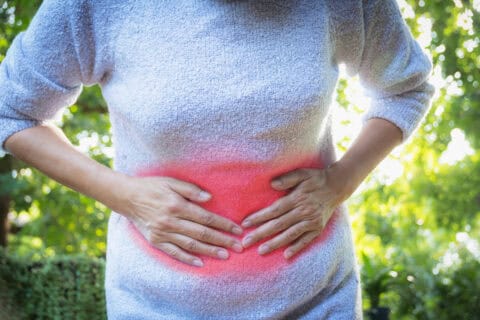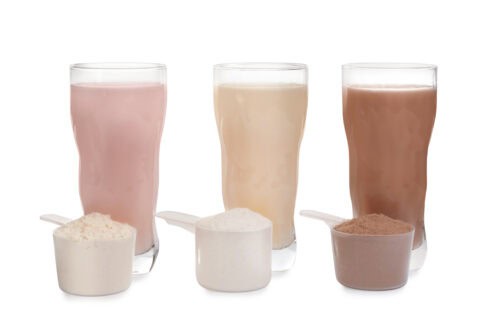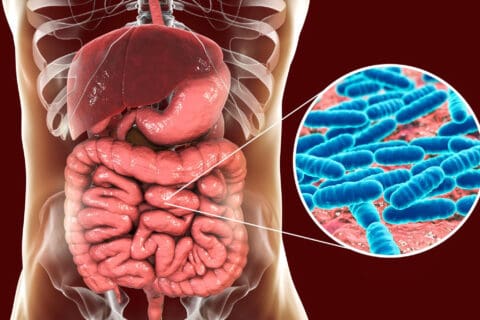Understanding the Elemental Diet
The Elemental Diet Guide
This comprehensive guide explores the Elemental Diet – a liquid-based nutritional therapy that’s bringing relief to those suffering from SIBO, IBD, and other digestive conditions. Discover how this medically-supported approach works, who benefits most, and practical steps to implement it effectively in your healing journey.

What is the Elemental Diet?
A liquid-only, nutritionally complete diet with pre-digested nutrients that allows the gut to rest and heal while providing all essential nutrition.
Medical Applications of the Elemental Diet
Evidence-based uses for specific digestive conditions

A Scientifically-Backed Approach to Gut Healing
Recommended Elemental Formulas
Our detailed comparison page helps you understand key differences in:
- Nutrient profiles and digestibility
- Taste and mixing properties
- Cost per day analysis
- Condition-specific suitability
- Available flavors and options
Read more about the Elemental Diet
Understanding the elemental diet

Exploring the Elemental Diet Beyond SIBO and IBD
The elemental diet is primarily known for its effectiveness in managing Small Intestinal Bacterial Overgrowth (SIBO) and Inflammatory Bowel Disease (IBD). However, this specialized liquid nutrition plan has applications far beyond these common conditions. As someone who has researched extensively in this area, I want to share how the elemental diet may benefit people suffering from various other health challenges.
What Is an Elemental Diet?
An elemental diet consists of liquid formulas containing pre-digested nutrients in their simplest forms:
- Amino acids instead of complete proteins
- Simple sugars instead of complex carbohydrates
- Medium-chain triglycerides as fat sources
- Essential vitamins and minerals
These formulations provide complete nutrition while giving your digestive system minimal work to do, essentially allowing it to rest and heal.
Elemental Diet for Lesser-Known Conditions
Diversion Colitis
Diversion colitis occurs when a section of the bowel becomes inflamed after being isolated from the functioning bowel during surgery (like a colostomy). Case studies show:
- Decreased bowel movements
- Resolution of rectal bleeding and mucus discharge
- Significant pain reduction
The theory is that elemental diets remove potential inflammatory antigens from the bowel, reducing autoimmunity and inflammation in the diverted colon.
Eosinophilic Esophagitis (EoE) and Gastroenteritis
Eosinophilic conditions involve immune-mediated inflammation of the digestive tract. Research highlights:
- 90% histologic remission rates in children with EoE
- 88% symptom resolution in adults after four weeks
- Significant decreases in inflammation markers
The hypoallergenic nature of elemental diets helps by eliminating potential food antigen exposures, allowing the inflamed tissues to heal.
Rheumatoid Arthritis (RA)
For those battling inflammatory joint conditions, elemental diets have shown:
- Improved grip strength
- Better Ritchie scores (a measure of joint tenderness)
- Reduced inflammation through “non-antigenic” properties
It’s worth noting that improvements typically aren’t sustained after returning to normal eating, making this approach more suitable as a temporary intervention.
Pancreatitis
Pancreatic inflammation can be extremely painful and difficult to manage. Limited research suggests:
- Clinical improvement in complicated severe acute pancreatitis cases
- Potential pain management benefits in chronic pancreatitis
- Reduced digestive demands on an inflamed pancreas
The low-fat versions of elemental diets may be particularly helpful as they further reduce pancreatic strain.
Celiac Disease and Dermatitis Herpetiformis
For people with refractory celiac disease (who don’t respond to standard gluten-free diets):
- Elemental diets provide completely gluten-free nutrition
- Easily digestible nutrients bypass damaged intestinal areas
- Potential improvement in associated skin conditions like dermatitis herpetiformis
Chemoradiotherapy-Associated Mucositis
Cancer treatment often causes painful mouth sores. Meta-analyses suggest:
- Supplemental elemental diets may help prevent oral mucositis
- Easily absorbed nutrients support healing of damaged tissues
- Complete nutrition during treatment when eating is difficult
How Elemental Diets Work
The benefits across these diverse conditions stem from several mechanisms:
- Hypoallergenic Properties: Removes potential food allergens and antigens
- Reduced Digestive Demand: Provides nutrition in pre-digested form
- Bacterial Modification: May “starve” harmful bacteria while altering intestinal flora
- Inflammatory Reduction: Limits exposure to irritants
- Complete Nutrition: Ensures nutritional needs are met despite digestive limitations
Challenges to Consider
Despite their potential benefits, elemental diets come with significant challenges:
- Poor Palatability: Often requires nasogastric tube administration
- Gastrointestinal Side Effects: Potential diarrhea due to hyperosmolality
- Cost: Formulations can be expensive
- Social Restrictions: Difficulty participating in normal eating activities
- Symptom Relapse: Common when returning to regular diet
When to Consider an Elemental Diet
You might consider discussing an elemental diet with your healthcare provider if:
- You’ve been diagnosed with one of the conditions discussed
- Traditional treatments haven’t provided sufficient relief
- You need nutritional support during healing
- You’re willing to commit to the restrictive nature of the diet
Final Thoughts
The elemental diet represents a valuable tool in the treatment arsenal for numerous conditions beyond the commonly associated SIBO and IBD. Its unique ability to provide complete nutrition while minimizing digestive demands makes it worth considering for those dealing with challenging health conditions.
Always work with qualified healthcare professionals, including a registered dietitian, before starting an elemental diet. They can help determine if this approach is appropriate for your specific situation, guide you through implementation, and monitor for any adverse effects.

Elemental Diet for IBD
Are you struggling with Inflammatory Bowel Disease (IBD) and searching for alternative treatment options? The elemental diet might be worth exploring as part of your healing journey. This specialized nutrition approach has shown promising results, particularly for Crohn’s disease patients. Let’s dive into what an elemental diet is, how it works for IBD, and what you should consider before trying it.
What Is an Elemental Diet?
An elemental diet consists of pre-digested nutrients in their simplest forms:
- Essential amino acids (the building blocks of protein)
- Simple sugars like glucose, dextrose, or maltose
- Medium-chain triglycerides (easily digestible fats)
- Vitamins and minerals
What makes this diet unique is that the nutrients come in their most basic, “elemental” form. This means your digestive system doesn’t have to work hard to break them down. The nutrients are quickly absorbed in the upper part of the small intestine, giving your digestive tract a much-needed rest while still providing complete nutrition.
How Effective Is the Elemental Diet for IBD?
The effectiveness of elemental diets varies depending on the type of IBD:
For Crohn’s Disease:
- Studies show remission rates of approximately 63.8% when using elemental diets
- It’s recommended as a first-line therapy for children and adolescents
- A 3-6 week course can induce clinical, endoscopic, and histologic remission
- Even partial elemental diets have shown significant improvements in resistant cases
For Ulcerative Colitis:
- Research is more limited with only one small study from 1989
- This study noted clinical improvement, but more research is needed
- The role of elemental diets in UC management remains to be further investigated
How Does the Elemental Diet Work for IBD?
The benefits of elemental diets for IBD patients extend beyond simply providing nutrition:
- Alters the gut microbiome: Changes the balance of bacteria in your intestines
- Eliminates food allergens and triggers: Acts as an allergy-elimination diet by removing potential food antigens
- Provides low-fat, anti-inflammatory nutrition: The medium-chain triglycerides in elemental formulas have anti-inflammatory properties
- Creates low fecal bulk: Minimal waste production reduces stress on the inflamed digestive tract
- Gives the gut complete rest: Pre-digested nutrients mean minimal digestive work
Challenges and Limitations to Consider
Despite its effectiveness, the elemental diet comes with several challenges:
- Poor taste: The free amino acids give elemental formulas an unpleasant flavor
- Diarrhea: The hyperosmolality of the formula can cause digestive upset
- Potential need for hospitalization: Some patients require medical supervision
- High relapse rates: When returning to regular food, symptoms may return
- Tube feeding: Many patients require nasogastric tubes due to poor oral tolerance
- Cost concerns: Elemental formulas can be expensive and not always covered by insurance
- Lifestyle restrictions: Social eating becomes challenging
- Risk of C. difficile: Prolonged use may increase the risk of this infection
Comparing with Other IBD Treatments
- vs. Corticosteroids: Elemental diets offer a non-toxic alternative for acute IBD
- vs. Elimination Diets: While elimination diets may be more palatable long-term, elemental diets can induce faster remission initially
How to Follow an Elemental Diet
The formula comes as a powder that you mix with water. You can consume it:
- Orally: Drink it slowly to prevent cramping (refrigerating may improve the taste)
- Via feeding tube: If you can’t tolerate drinking the formula
Semi-Elemental Options
If the fully elemental diet seems too challenging, semi-elemental formulas using whey protein hydrolysate may be an option:
- Better taste
- Similar effectiveness for many conditions
- Easier digestion for some individuals
Note: Those with severe allergies should be cautious, as semi-elemental formulas may still contain trace amounts of allergenic proteins.
Long-Term Use and Maintenance
While most research focuses on using elemental diets to induce remission, some data supports:
- Partial elemental diets (some calories from formula, some from regular food)
- Using elemental formulas as supplements alongside a regular diet
- Transitioning to an elimination diet after achieving remission to identify trigger foods
Is an Elemental Diet Right for You?
The elemental diet represents a valuable tool in IBD management, especially for Crohn’s disease patients looking to induce remission. However, it requires careful consideration of the challenges involved, including palatability, cost, and lifestyle impact.
Before starting an elemental diet, consult with your gastroenterologist and a registered dietitian who specializes in IBD. They can help determine if this approach is appropriate for your specific condition and guide you through the process to maximize your chances of success.
Have you tried an elemental diet for your IBD? What was your experience? Share your thoughts in the comments below.

Elemental Diet on a Budget – DIY Formula
When facing digestive conditions that require an elemental diet, the cost of commercial formulas can be overwhelming. Many people seeking relief from conditions like SIBO (Small Intestinal Bacterial Overgrowth) or Crohn’s disease find themselves struggling with the financial burden of pre-made elemental formulas. This article explores how to create a homemade elemental diet that can be more budget-friendly while still meeting your nutritional needs.
What Is an Elemental Diet?
An elemental diet is a liquid nutrition plan where nutrients are provided in their simplest, most digestible form:
- Amino acids as the protein source
- Simple sugars (glucose or dextrose) for carbohydrates
- Essential fats, often medium-chain triglycerides (MCTs)
- Vitamins and minerals for complete nutrition
The purpose is to provide complete nutrition while allowing the digestive system to rest and heal, as these pre-digested nutrients require minimal digestive effort.
Why Consider a Homemade Formula?
Commercial elemental diet formulas can cost hundreds of dollars per week, making them inaccessible for many people. Creating your own formula can significantly reduce expenses, though it requires careful planning to ensure nutritional completeness.
Essential Components for a Homemade Elemental Diet
1. Protein Source: Amino Acid Powder
- Free-form amino acids provide protein in its most digestible form
- This is typically the most expensive component
- Look for pharmaceutical-grade amino acid powders without additives or fillers
2. Carbohydrate Source
Several options exist for your carbohydrate needs:
- Dextrose (glucose) – less sweet but pure simple sugar
- Honey – more flavorful but must be used carefully if you have SIBO
- Grape syrup – similar profile to honey
- Maltodextrin – another option found in some commercial formulas
3. Fat Source
- MCT oil is highly recommended as it’s easily absorbed even with compromised digestion
- Coconut oil can be a more affordable alternative with similar benefits
- Important note: Introduce MCT oil gradually as it can cause diarrhea if started too quickly
4. Vitamins and Minerals
- Look for synthetic multivitamin/mineral supplements without added fiber or food components
- Recommended options include:
- Freeda SCD Multi
- Klaire VitaSpectrum Powder
- Pure Encapsulations Nutrient 950
- Don’t forget to include salt (sodium) as an essential electrolyte
How to Prepare Your Homemade Formula
- Measure each component according to your calculated nutritional needs
- Mix ingredients with water in a blender until desired consistency is reached
- Important: Never use juice or milk as your mixing liquid
- Many find it easier to sip the mixture throughout the day rather than consuming large amounts at once
Challenges to Consider
Palatability Issues
Let’s be honest – elemental diets taste unpleasant. The free-form amino acids have a strong, sometimes sulfuric flavor that many compare to sewage water or rotten eggs. Some ways to manage this:
- Use non-caloric flavorings like stevia or crystal light
- Keep the formula cold
- Use a straw placed toward the back of your mouth
- Divide into smaller portions throughout the day
Nutritional Balance
Ensuring proper nutritional balance is critical:
- Calculate your specific caloric and nutrient needs based on weight, height, age, and activity level
- Measure ingredients precisely
- Consider working with a healthcare professional to determine appropriate amounts
Cost Considerations
While homemade formulas are less expensive than commercial options, the components still represent an investment:
- Amino acid powder is the most expensive component
- Shop around for the best prices on all ingredients
- Consider buying in bulk if you’ll be on the diet for more than a week
Important Safety Precautions
Medical supervision is essential when undertaking an elemental diet. This cannot be stressed enough. Before starting:
- Consult with a healthcare provider, preferably one familiar with elemental diets
- Discuss your specific health condition and nutritional needs
- Plan for regular check-ins during the diet
- Have a clear plan for reintroducing foods afterward
Duration Considerations
Most elemental diets for conditions like SIBO last 2-3 weeks. Your healthcare provider should determine the appropriate duration based on your specific condition and response.
Semi-Elemental vs. Fully Elemental Options
If you find a fully elemental diet too challenging:
- Semi-elemental formulas contain partially broken-down proteins (peptides) rather than free amino acids
- These generally taste better and may be easier to tolerate
- However, they haven’t been specifically studied for conditions like SIBO
Final Thoughts
A homemade elemental diet can be a cost-effective alternative to commercial formulas for those needing digestive rest. However, it requires careful planning, precise measurements, and medical supervision to ensure safety and effectiveness.
Remember that while saving money is important, your health is paramount. Don’t attempt an elemental diet without proper medical guidance, and be prepared for the challenges involved in creating a nutritionally complete formula that you can tolerate for the necessary duration.
Have you tried an elemental diet? Share your experience in the comments below.

3 Types of Elemental Diets
Navigating digestive health challenges can be overwhelming. If you’re researching treatment options for conditions like Crohn’s disease, SIBO, or other digestive disorders, you’ve likely encountered the term “elemental diet.” But what exactly is it, and what are the different types available? This post breaks down everything you need to know about elemental diets in clear, straightforward terms.
What Is an Elemental Diet?
An elemental diet is a specialized nutritional formula designed to provide complete nutrition in a form that requires minimal digestion. These formulas contain nutrients broken down to varying degrees, making them easier for your digestive system to absorb while giving your gut a chance to rest and heal.
Understanding Proteins, Peptides, and Amino Acids
The key distinction between elemental diet types lies in how broken down the protein components are:
- Proteins: These are large, complex molecules made up of hundreds or thousands of amino acids linked together in specific sequences. Proteins require significant digestive effort to break down. Found in partially elemental diets (like those containing whole whey protein), proteins must be broken down by your digestive enzymes before absorption.
- Peptides: These are shorter chains of amino acids (typically 2-50 amino acids linked together). Think of them as partially pre-digested proteins. Your body still needs to break them down further, but the process requires less digestive effort than whole proteins. Semi-elemental diet formulas contain these partially hydrolyzed proteins.
- Amino Acids: These are the most basic building blocks of protein—individual molecules that your body can immediately absorb without further breakdown. Fully elemental diets contain these free-form amino acids, which bypass digestive processes entirely, making them ideal for severely compromised digestive systems.
The progression from proteins to peptides to amino acids represents increasing levels of pre-digestion in the formula and decreasing demands on your digestive system.
The Three Main Types of Elemental Diets
Elemental diets can be categorized into three main types based on how broken down the nutrients are:
1. Fully Elemental Diet
- Protein source: Contains free-form amino acids (the most basic building blocks of protein)
- Carbohydrate source: Simple sugars like glucose, fructose, or dextrose, and sometimes glucose polymers like maltodextrin
- Fat content: Typically very low in fat
- Taste profile: Often described as unpalatable or having a medicinal taste (some users compare it to “sewage water” due to sulfur-containing amino acids)
- Administration: Sometimes given through a feeding tube due to taste issues
- Digestive effort: Requires virtually no digestion, making it ideal for severe digestive conditions
2. Semi-Elemental Diet
- Protein source: Contains partially hydrolyzed proteins (broken down into peptides – short chains of amino acids)
- Carbohydrate source: Mix of simple sugars and some longer-chain carbohydrates
- Fat content: Usually contains easily absorbed fats like medium-chain triglycerides (MCTs)
- Taste profile: Generally better tasting than fully elemental formulas
- Digestive effort: Requires minimal digestion but slightly more than fully elemental formulas
- Usage: Many modern clinical elemental formulas are technically semi-elemental
3. Partially Elemental Diet
- Protein source: May contain whole proteins like whey protein rather than hydrolyzed proteins
- Taste profile: Usually more palatable than the other types
- Cost: Typically less expensive than fully or semi-elemental options
- Application: Sometimes refers to using elemental formulas as partial meal replacements (combining formula intake with some regular food)
Who Might Benefit from an Elemental Diet?
Elemental diets are often recommended for people with:
- Inflammatory bowel diseases (IBD) like Crohn’s disease
- Small intestinal bacterial overgrowth (SIBO)
- Eosinophilic esophagitis
- Severe food allergies or sensitivities
- Malabsorption issues
- During recovery from certain surgeries or treatments
Important Considerations Before Starting
- Medical supervision: Always start an elemental diet under the guidance of a healthcare provider
- Nutritional completeness: Ensure the formula you choose provides complete nutrition
- Duration: Most therapeutic protocols range from 2-4 weeks
- Reintroduction: A careful food reintroduction plan is essential after completing the diet
- Palatability: Consider flavor options and whether you’ll be able to tolerate the taste
- Cost: These specialized formulas can be expensive and may not be covered by insurance
Making Your Choice
When deciding which type of elemental diet might be right for you:
- More severe digestive issues may require a fully elemental formula
- If taste is a significant concern, semi-elemental or partially elemental options might be more tolerable
- Your healthcare provider can help determine which form is most appropriate for your specific condition
Remember that while elemental diets can be effective therapeutic tools, they’re not long-term nutrition solutions for most people. They’re typically used as short-term interventions to allow the digestive system to heal before transitioning back to a more conventional diet.

How to Start an Elemental Diet
Starting an elemental diet can feel overwhelming, but with proper guidance and preparation, you can navigate this therapeutic approach effectively. This guide provides practical steps to help you begin your elemental diet journey safely and successfully.
Preparation Steps: Before You Begin
Medical Consultation
Always consult a healthcare professional before starting an elemental diet. This crucial step ensures:
- Confirmation that an elemental diet is appropriate for your specific condition
- Clear understanding of your treatment goals and timeline
- Review of current medications and supplements that might need adjustment
- Assessment of your readiness for a liquid-only diet
- Identification of any contraindications for your specific health situation
Product Selection
Choosing the right elemental formula is essential for success:
- Formula types: Consider fully elemental (free amino acids), semi-elemental (short peptides), or partially elemental options based on your doctor’s recommendation
- Form: Decide between powder mixes or ready-to-drink liquids
- Taste considerations: Sample flavored and unflavored options if possible
- Dietary restrictions: Look for formulas that accommodate sensitivities (e.g., whey-free for dairy sensitivity)
- Cost and accessibility: Research insurance coverage and ensure you can obtain sufficient supply
Gather Supplies
Prepare all necessary items:
- Sufficient elemental formula for your planned duration
- Shaker bottle or blender for mixing
- Storage containers if pre-mixing batches
- Water bottle for staying hydrated throughout the day
Calculating Your Caloric Needs
Working with your healthcare provider or dietitian to determine your daily caloric requirements is essential:
- Your caloric needs depend on age, sex, weight, height, activity level, and treatment goals
- Calculate the number of servings needed using the formula’s nutritional information
- Ensure you consume at least your basal metabolic rate (BMR) in calories
- Be prepared to adjust intake based on hunger signals and activity levels
Creating a Daily Schedule
Establishing a consistent consumption pattern helps your body adjust:
- Spread formula intake throughout the day rather than consuming large amounts at once
- Sip slowly over 15-30 minutes per serving to improve digestion and comfort
- Listen to your body’s hunger and fullness cues
- Be clear about whether you’re replacing all meals or just some
- Build flexibility into your schedule to accommodate daily activities
Mixing Instructions and Tips
Proper preparation improves palatability and digestibility:
- Follow the specific mixing instructions on your formula’s packaging
- Use the recommended amount of water for proper consistency
- Consider mixing a day’s worth in advance and refrigerating
- Add ice cubes or blend with ice for improved texture and temperature
- Ensure powder is completely dissolved to avoid clumps
- Experiment with temperature – most people prefer their formula cold
Strategies for Success and Compliance
These practical approaches can help you maintain your elemental diet:
- Plan ahead: Keep formula readily available, especially when away from home
- Stay hydrated: Drink plenty of water throughout the day (in addition to your formula)
- Manage taste fatigue: Try different flavors if available or use a straw
- Address hunger: Increase frequency or amount if experiencing excessive hunger
- Maintain light activity: Continue gentle exercise like walking or yoga
- Seek support: Connect with friends, family, or online support groups
- Track your experience: Keep a journal of formula consumption and symptoms
- Manage social situations: Prepare for food-centered events by bringing your formula
- Reduce caffeine beforehand: Gradually wean off caffeine before starting to minimize withdrawal
What to Expect Day-by-Day
Understanding the typical progression can help you persist through challenges:
Days 1-3
- Initial adjustment period with potential taste and texture challenges
- Possible hunger, fatigue, or mild headaches
- Changes in bowel movements
- Clearer urine as hydration increases
Days 3-7
- Body begins adapting to the liquid nutrition
- Hunger typically subsides as caloric needs are met
- Possible reduction in digestive discomfort
- Continuing adjustment of bowel habits
Week 2 onwards
- Increased energy levels for many people
- Greater reduction in target symptoms
- Improved tolerance of formula taste
- Possible mild die-off symptoms as gut microbiome shifts
Final Thoughts
Remember that an elemental diet is a therapeutic tool that requires professional guidance. Stay in communication with your healthcare team throughout the process, especially if you experience concerning side effects or significant discomfort.
By following these guidelines and working closely with your healthcare provider, you can maximize the potential benefits of an elemental diet while minimizing challenges and discomfort.

Risks and Side Effects of the Elemental Diet
Starting an elemental diet can be a significant step in your health journey, particularly if you’re dealing with conditions like SIBO, Crohn’s disease, or other digestive disorders. While this specialized liquid nutrition approach offers benefits for many, it’s equally important to understand the potential challenges you might face. This article provides transparent information about the risks and side effects to help you prepare adequately.
Common Side Effects
When beginning an elemental diet, your body needs time to adjust to this new form of nutrition. You may experience:
- Gastrointestinal symptoms – Initially, many people notice gas, bloating, diarrhea, and abdominal pain
- Bowel changes – Output can vary widely from very low (constipation) to frequent loose stools
- Hunger and fatigue – These are normal responses as your body adapts to liquid nutrition
- Headaches and mood swings – Often temporary but can be challenging during the adjustment period
- Nausea – Possibly related to the high sugar content in some formulas
- Oral symptoms – The lack of chewing can lead to mouth discomfort
- Die-off symptoms – As gut bacteria populations change, you might experience headache, flu-like symptoms, muscle aches, fatigue, and brain fog
Managing Hunger and Psychological Aspects
The psychological challenge of not eating solid food shouldn’t be underestimated. Successful strategies include:
- Drink formula slowly throughout the day rather than in large amounts at once
- Sip over 15-30 minutes instead of quickly consuming
- Use a favorite cup or mug to make the experience more pleasant
- Follow a predictable schedule to create a routine
- Keep a journal to track progress, symptoms, and challenges
- Seek support from family, friends, or online communities
- Prepare mentally for the restrictive nature of the diet before starting
When to Contact a Doctor
Medical supervision is crucial during an elemental diet. Contact your healthcare provider:
- Before starting, changing, or stopping the diet
- If you experience severe or persistent side effects
- When following the diet for longer than 3 weeks
- To discuss how the diet interacts with your current medications and supplements
- To clarify the specific goals of the diet for your condition
Contraindications
An elemental diet may not be suitable for everyone. Exercise caution if you have:
- A restrictive food intake disorder or food aversions
- Blood sugar control issues, including type 2 diabetes
- Other medical conditions that might be complicated by a liquid-only diet
Strategies for Minimizing Discomfort
These practical tips can help make the experience more manageable:
- Refrigerate the formula and drink it cold or with ice to improve taste
- Discuss different formula brands or permitted flavorings with your dietitian
- Drink the formula slowly to prevent cramping and stomach discomfort
- Stay hydrated by drinking plenty of water throughout the day
- Engage in light physical activity like walking or gentle yoga if you feel up to it
Real-World Expectations During the Diet
Understanding what to realistically expect can help you prepare:
- Taste challenges – Up to 40% of people struggle with the taste and smell
- Restrictive nature – This is exclusively a liquid formula diet in most cases
- Weight changes – Weight loss may occur but isn’t the primary goal
- Duration – Typically short-term (2-6 weeks depending on condition)
- Social impact – Dining out and social gatherings become more challenging
- Reintroduction phase – Returning to solid foods requires a careful, gradual approach
- Cost considerations – Elemental formulas can be expensive without insurance coverage
Final Thoughts
An elemental diet can be a valuable therapeutic tool for specific health conditions, but it comes with challenges. By understanding and preparing for the potential side effects and difficulties, you can approach this treatment with realistic expectations.
Remember that this diet should only be undertaken with proper medical supervision. Your healthcare team can help you navigate the challenges, monitor your progress, and adjust your approach as needed to maximize benefits while minimizing discomfort.
Have you tried an elemental diet? What strategies helped you manage the side effects most effectively? Share your experience in the comments to help others on their healing journey.

Elemental Diet for SIBO
If you’re struggling with uncomfortable digestive symptoms related to Small Intestinal Bacterial Overgrowth (SIBO), you may have heard about the elemental diet as a potential treatment option. This liquid-only diet has shown impressive success rates in clinical studies and offers an alternative approach for those who haven’t found relief through antibiotics or other treatments.
What Is SIBO?
SIBO occurs when excessive bacteria build up in your small intestine – an area that should have relatively few bacteria compared to your large intestine. This overgrowth can lead to:
- Bloating and excessive gas
- Abdominal pain and discomfort
- Diarrhea or constipation
- Nutrient absorption issues
- Fatigue and other systemic symptoms
What Is an Elemental Diet?
An elemental diet consists of liquid formulas containing nutrients in their most basic, pre-digested forms:
- Proteins broken down into individual amino acids
- Carbohydrates in simple sugar form
- Fats as essential fatty acids
- Essential vitamins and minerals
These formulas provide complete nutrition while being absorbed in the upper part of your small intestine, leaving little for bacteria further down to feed on.
How Elemental Diets Help Treat SIBO
The primary mechanism is surprisingly simple but effective:
- Bacterial starvation: Since nutrients are absorbed high in the digestive tract, bacteria in the small intestine have less food available.
- Reduced fermentation: Less fermentable material means reduced gas production and bloating.
- Digestive rest: The easily digestible formula allows your digestive system to recover.
- Anti-inflammatory effects: Some components may possess properties that help heal the gut lining.
The Protocol: What to Expect
A typical elemental diet protocol for SIBO involves:
- Duration: 2-3 weeks (14-21 days) of exclusive elemental formula consumption
- Formula intake: Consuming enough formula to meet your daily caloric needs
- No solid food: Replacing all meals with the liquid formula
- Medical supervision: Regular check-ins with your healthcare provider
- Gradual reintroduction: Slowly reintroducing solid foods after completion
Success Rates: What the Research Shows
Clinical studies have demonstrated impressive results:
- A 2004 study found that 80% of participants normalized their lactulose breath test after 14 days, with an additional 5% improving after 21 days.
- A more recent clinical trial showed 100% normalization of breath tests in SIBO patients using a palatable elemental formula.
- Overall success rates appear to be significantly higher than antibiotic approaches, which typically show around 50% effectiveness.
Elemental Diet vs. Antibiotics for SIBO
When comparing treatment options:
| Aspect | Elemental Diet | Antibiotics |
|---|---|---|
| Effectiveness | 80-100% in studies | Around 50% or less |
| Mechanism | Starves bacteria | Kills bacteria |
| Side effects | Hunger, fatigue, headaches | Digestive upset, potential resistance |
| Ease of use | Challenging (liquid-only) | Relatively simple (pills) |
| Cost | Often expensive | May be covered by insurance |
| Duration | 2-3 weeks | 1-2 weeks typically |
Important Considerations Before Starting
Before embarking on an elemental diet, consider these factors:
- Taste challenges: Many formulas have an unpleasant taste that can make adherence difficult
- Cost implications: Commercial formulas can be expensive and may not be covered by insurance
- Social limitations: A liquid-only diet can impact your social life and daily routines
- Potential side effects: Hunger, headaches, fatigue, and digestive adjustments are common
- Medical supervision: Always undertake this approach under healthcare supervision
- Personal circumstances: Consider your work schedule, living situation, and support system
Who Should Consider an Elemental Diet?
This approach may be particularly beneficial if:
- You’ve tried antibiotics without success
- You have recurrent SIBO that keeps returning
- You prefer a non-pharmaceutical approach
- Your symptoms are severe and significantly impacting quality of life
- You have other gut conditions that might benefit from digestive rest
Product Options
While specific product recommendations should come from your healthcare provider, some formulas used in studies include:
- Vivonex Plus (used in the landmark 2004 study)
- Mbiota Elemental (designed for improved palatability)
- Semi-elemental options with hydrolyzed proteins (may be easier to tolerate)
Your doctor or dietitian can help you select the most appropriate formula based on your specific needs, allergies, and sensitivities.
The Bottom Line
The elemental diet represents a powerful tool for addressing SIBO, with success rates that often exceed traditional antibiotic approaches. However, it requires commitment, preparation, and medical supervision to implement safely and effectively.
If you’re considering this approach, discuss it thoroughly with your healthcare provider to determine if it’s appropriate for your specific situation. While challenging to follow, many patients find the temporary restrictions worthwhile when they experience significant relief from troublesome SIBO symptoms.
Have you tried an elemental diet for SIBO? What was your experience like? Share your thoughts in the comments below.

Elemental Diet – Benefits and Uses
Living with chronic digestive issues can be exhausting and overwhelming. If you’ve been struggling with conditions like SIBO, IBD, or other digestive disorders, you may have heard about the elemental diet as a potential solution. This guide will walk you through what the elemental diet is, how it works, and the various health conditions it can help address.
What Is an Elemental Diet?
An elemental diet consists of pre-digested nutrients in their simplest form:
- Amino acids (broken-down proteins)
- Fatty acids (broken-down fats)
- Simple sugars (broken-down carbohydrates)
These nutrients are absorbed in the upper part of the small intestine, which means they don’t require much digestive effort and leave minimal residue for bacteria to feed on further down your digestive tract.
Applications of the Elemental Diet
SIBO Treatment
Small Intestinal Bacterial Overgrowth (SIBO) is a condition where excessive bacteria grow in the small intestine. The elemental diet has shown impressive results for SIBO treatment:
- How it works: The pre-digested nutrients are quickly absorbed in the upper intestine, effectively “starving” the bacteria by reducing their food supply.
- Success rates:
- A 2004 study showed 80% of IBS patients with abnormal breath tests normalized after 14 days
- After an additional week, the success rate increased to 85%
- A more recent trial with a palatable elemental formula showed 100% normalization in SIBO patients and 75% in patients with both SIBO and intestinal methanogen overgrowth
- Comparison to antibiotics: One study demonstrated that a 2-week elemental diet normalized breath tests more effectively than antibiotics (80% vs. 51%)
- Best for: Patients who cannot tolerate antibiotics or haven’t responded to antibiotic treatment
Inflammatory Bowel Disease Management
Elemental diets have been used for decades to manage IBD, particularly Crohn’s disease:
- For inducing remission:
- Exclusive enteral nutrition (EEN) with elemental formulas for 6-8 weeks has been effective
- A Cochrane review found similar remission rates (63.8%) compared to other enteral feeds
- Clinical remission was reported in 71% of Crohn’s disease patients
- For maintenance:
- Partial elemental diets (half daily calories from formula) can reduce relapse rates
- Relapse rate was 34% for patients on partial elemental diet versus 64% for those on normal diet
- Limitations:
- Less clear benefits for ulcerative colitis
- Relapse is common when returning to normal diet
- Poor palatability often requires tube feeding
Eosinophilic Esophagitis Treatment
Eosinophilic Esophagitis (EoE) is an allergic inflammatory condition of the esophagus:
- Efficacy:
- Meta-analyses show histologic remission rates of 90-91%
- 88% of adults experienced symptom relief after four weeks
- Significantly decreases inflammation
- Mechanism: Eliminates food antigens that trigger eosinophilic inflammation
- Challenges:
- Formula intolerance
- High cost
- Social barriers
- Poor taste
Post-Surgical Gut Rest
After gastrointestinal surgeries, elemental diets can be beneficial:
- Provides complete nutrition that’s easily absorbed
- Reduces stress on the healing digestive tract
- Supports early recovery after procedures like laparoscopic colectomy
- Available as commercial formulas for tube feeding
Other Medical Applications
Elemental diets have shown promise for various other conditions:
- Eosinophilic Gastritis/Gastroenteritis: Complete histologic remission in 14 of 15 subjects after 6 weeks
- Chronic Pancreatitis: Pain reduction and clinical improvement, with complete pain resolution in 59% of patients in one study
- Celiac Disease: Potential role in treating refractory celiac disease type 1
- Bile Acid Diarrhea: May reduce fecal bile acid excretion and improve symptoms
- Reduced Aspiration Risk: May lower aspiration pneumonia risk in PEG-fed patients due to faster gastric emptying
- Chemoradiotherapy Support: May help prevent oral mucositis during cancer treatment
Limitations and Considerations
Despite its benefits, several factors limit widespread use of elemental diets:
- Palatability: Many formulas have an unpleasant taste
- Cost: Often expensive and may not be covered by insurance
- Compliance: Difficult to maintain for extended periods
- Social aspects: Challenges of not eating regular meals
- Reintroduction: Carefully planned food reintroduction is often necessary afterward
Conclusion
The elemental diet offers a promising approach for various digestive and inflammatory conditions. While research demonstrates impressive success rates for conditions like SIBO, Crohn’s disease, and eosinophilic esophagitis, it’s important to remember that this is a medical intervention that should be undertaken with proper healthcare guidance.
If you’re considering an elemental diet, discuss with your healthcare provider whether it’s appropriate for your condition, the optimal duration, and how to implement and monitor it effectively. With proper medical supervision, the elemental diet may provide the relief you’ve been seeking from chronic digestive issues.

How the Elemental Diet Works
For individuals struggling with digestive issues, finding effective solutions can be challenging. The elemental diet represents a specialized approach that has helped many find relief. This article explores how this unique dietary intervention works and why it might be beneficial for certain digestive conditions.
What Is an Elemental Diet?
An elemental diet is a specialized nutrition plan that provides nutrients in their simplest, most easily absorbable forms. Unlike regular food that requires significant digestive processing, elemental formulas deliver pre-digested nutrients that require minimal effort from your digestive system.
The Science Behind the Elemental Diet
Pre-digested Nutrients Minimize Digestive Work
The cornerstone of an elemental diet is its composition of pre-digested nutrients:
- Proteins are provided as free amino acids, eliminating the need for enzymatic breakdown
- Carbohydrates appear as simple sugars (monosaccharides) like glucose or easily digestible maltodextrin
- Fats are typically medium-chain triglycerides (MCTs), which absorb passively without requiring significant enzymatic action
By supplying nutrients in these elementary forms, the diet bypasses most normal digestive processes, reducing the energy your body needs to produce digestive enzymes.
How Absorption Differs From Regular Digestion
Regular Digestion Process:
- Mechanical breakdown through chewing and muscle contractions
- Enzymatic breakdown using enzymes from saliva, stomach, pancreas, and intestines
- Absorption of smaller molecules across the intestinal lining, often requiring active transport mechanisms
Elemental Diet Absorption:
- Pre-digested nutrients need minimal to no further breakdown
- Absorption occurs rapidly in the upper digestive tract (proximal small intestine)
- Many nutrients absorb through passive diffusion, requiring less energy
- Minimal residual bulk reaches the lower intestine
Benefits for Gut Healing
Allowing the Digestive System to Rest
The reduced workload on your digestive system creates several important healing opportunities:
- Gut rest: The digestive system doesn’t need to expend energy producing enzymes or breaking down complex molecules
- Healing of intestinal lining: Available amino acids, particularly glutamine, support growth and repair of epithelial cells
- Reduced inflammation: The absence of complex food components and potential allergens can decrease inflammatory triggers
- Starving overgrown bacteria: In conditions like SIBO, easily absorbed nutrients are taken up before reaching areas of bacterial overgrowth
Who Might Benefit?
The elemental diet can be particularly helpful for individuals with:
- Inflammatory bowel disease (IBD)
- Small intestinal bacterial overgrowth (SIBO)
- Eosinophilic esophagitis (EoE)
- Food sensitivities or allergies
- Other conditions involving gut inflammation or damage
Final Thoughts
The elemental diet works by providing complete nutrition in a form that requires minimal digestive effort. This gives your digestive system a much-needed break to heal while ensuring you still receive essential nutrients.
If you’re struggling with digestive issues, consulting with a healthcare provider about whether an elemental diet might be appropriate for your situation is recommended. While it can be a powerful healing tool, proper medical supervision is essential when undertaking this specialized nutritional approach.

What is the Elemental Diet?
Are you struggling with digestive issues that don’t seem to respond to conventional treatments? The elemental diet might be worth discussing with your healthcare provider. This specialized approach has helped many people find relief from various gastrointestinal conditions. Let’s explore what it is and how it might help.
Introduction
The elemental diet is a specialized liquid nutrition plan that provides complete nutrition in an easily digestible form. Unlike regular food or even other medical liquid diets, the elemental diet contains nutrients that are already broken down to their most basic form – hence the name “elemental.”
This medical intervention is typically recommended for specific health conditions rather than as a general dietary approach or weight loss solution.
What Exactly is an Elemental Diet?
The elemental diet is a hypoallergenic, sometimes protein-free, artificial diet designed to supply all necessary nutrients in their simplest forms. This “predigested” nature is what makes it unique and beneficial for certain conditions.
Core Components:
- Amino acids – These are the building blocks of protein, provided in their free form rather than as complete proteins that need digestion
- Simple carbohydrates – Usually in the form of glucose, maltodextrin, or other easily absorbed sugars
- Medium-chain triglycerides (MCTs) – These fats require minimal digestion compared to long-chain fatty acids
- Essential vitamins and minerals – Providing all necessary micronutrients in readily available forms
How It’s Used:
- Comes as a powdered formula that’s mixed with water
- Can replace some meals or all solid food intake depending on the treatment plan
- In severe cases, may be administered through feeding tubes
- Available in commercial formulations or sometimes custom-prepared by healthcare providers
How Does an Elemental Diet Work?
The elemental diet works through several mechanisms that make it effective for certain conditions:
Key Mechanisms:
- Gives the digestive system a rest – Since nutrients are already broken down, minimal digestive work is required
- Reduces antigenic load – The simple components are less likely to trigger allergic reactions or inflammation
- Produces minimal waste – Results in very little fecal matter, reducing bowel movements
- Alters gut microbiota – Can change the intestinal bacterial environment, potentially starving harmful bacterial overgrowth
- Provides healing nutrients – Some components may directly support repair of the gut lining
Who Might Benefit from an Elemental Diet?
The elemental diet is primarily used for people with specific medical conditions:
Gastrointestinal Conditions:
- Inflammatory Bowel Disease (IBD)
- Crohn’s disease
- Ulcerative colitis
- Small Intestinal Bacterial Overgrowth (SIBO)
- Eosinophilic Esophagitis (EoE)
- Irritable Bowel Syndrome (IBS) in some cases
- Refractory Celiac Disease that doesn’t respond to gluten-free diet alone
Other Conditions:
- Oral lesions associated with chemotherapy or radiation
- Chronic pancreatitis
- Eczema (in certain cases)
- Food allergies and sensitivities
- Intestinal Methanogen Overgrowth (IMO)
Important note: The elemental diet is not intended for weight loss in otherwise healthy individuals.
Potential Benefits
When used appropriately under medical supervision, the elemental diet offers several potential benefits:
- Induces remission in conditions like IBD and EoE
- Provides a “gut reset” that can break cycles of inflammation
- Reduces inflammation both in the digestive tract and potentially throughout the body
- Delivers complete nutrition despite digestive limitations
- Ensures nutrient absorption even in people with malabsorption issues
- Helps identify food triggers during the reintroduction phase
Challenges and Drawbacks
Despite its benefits, the elemental diet comes with several challenges:
Common Difficulties:
- Taste issues – Many formulations have an unpleasant taste that can be difficult to tolerate
- Compliance challenges – Following a liquid-only diet requires significant dedication
- Financial considerations – Elemental formulas can be expensive and may not be covered by insurance
- Social limitations – Liquid diets can impact social eating situations and daily routines
- Possible side effects:
- Hunger
- Fatigue
- Headaches
- Mood changes
- Digestive adjustment issues like bloating
- Potential for fungal overgrowth in some cases
Long-term Concerns:
- Nutritional balance – Extended use requires careful monitoring
- Blood sugar impacts – High carbohydrate content may affect blood glucose levels
- Oral health – Lack of chewing can affect dental and oral health
- Muscle maintenance – May be more difficult to maintain muscle mass
How is an Elemental Diet Used?
Implementation of the elemental diet should always occur under healthcare supervision:
Implementation Steps:
- Medical consultation – Always work with a doctor or registered dietitian
- Duration planning – Treatment periods range from a few days to several weeks
- Formula selection – Your healthcare provider will recommend appropriate options
- Gradual introduction – Sometimes the diet is phased in over several days
- Proper consumption – Typically consumed slowly throughout the day
- Food reintroduction – After the elemental phase, foods are systematically reintroduced to identify triggers
Conclusion
The elemental diet is a specialized medical nutrition therapy that provides nutrients in their simplest forms to minimize digestive work and reduce potential triggers. While it offers significant benefits for specific conditions, it should only be used under professional guidance.
For those suffering from conditions like Crohn’s disease, SIBO, or other digestive disorders that haven’t responded to conventional treatments, the elemental diet may be worth discussing with your healthcare provider as a potential option.
Remember that this approach is a medical intervention rather than a general health or weight loss solution. The challenges of following an elemental diet are significant, but for some patients, the potential benefits make these difficulties worthwhile.
Note: This article is for informational purposes only and does not constitute medical advice. Always consult with qualified healthcare professionals before making changes to your diet or treatment plan.
Frequently Asked Questions
find out what is most asked about the elemental diet
- Basics
What is an elemental diet?
An elemental diet is a hypoallergenic, liquid diet that provides all essential nutrients in a predigested form, usually consisting of amino acids, glucose or other simple sugars, medium-chain triglycerides, vitamins, and minerals. It is designed to be easily absorbed in the upper part of the small intestine, giving the rest of the digestive tract a rest.
- Basics
Why use an elemental diet?
Elemental diets are used to manage various health conditions, particularly gastrointestinal disorders like SIBO, eosinophilic esophagitis, Crohn’s disease, and ulcerative colitis, as well as other conditions like food allergies and chemoradiotherapy-associated mucositis. It can help reduce inflammation, starve bacterial or fungal overgrowths, and provide nutritional support when the digestive system is impaired.
- Basics
Is medical supervision necessary?
Yes, an elemental diet should ideally be followed under the supervision of a healthcare professional, such as a doctor or registered dietitian. They can help determine if it’s the right treatment, recommend the appropriate formula and dosage, monitor for side effects, and guide the reintroduction of food.
- Duration and Protocol
How long can I safely stay on the diet?
The duration is not standardized and depends on your health condition and healthcare provider’s recommendations. It is often short-term, ranging from 4 to 6 weeks. For SIBO, a typical duration is 14–21 days. For inflammatory bowel disease, it could be up to six weeks for a 100% elemental diet. Longer-term use, especially beyond three weeks, should be under professional supervision. Some individuals may use a partial elemental diet for extended periods.
- Duration and Protocol
Are there any allowed foods?
An elemental diet typically involves consuming only the elemental formula and no solid food. Water and plain tea are usually the only other permitted liquids. Some healthcare providers may permit specific items like candies made with pure cane sugar, corn syrup, Gatorade, or highly refined oils in certain circumstances. Always adhere strictly to your healthcare provider’s guidance.
- Duration and Protocol
Can I drink coffee/tea?
You can drink water, tea, or black coffee. Caffeine is generally acceptable for most people, but avoid cream and sugar and be cautious if you are sensitive to caffeine. Some practitioners recommend avoiding caffeinated beverages for better bowel rest, though herbal teas might be acceptable depending on the specific type.


